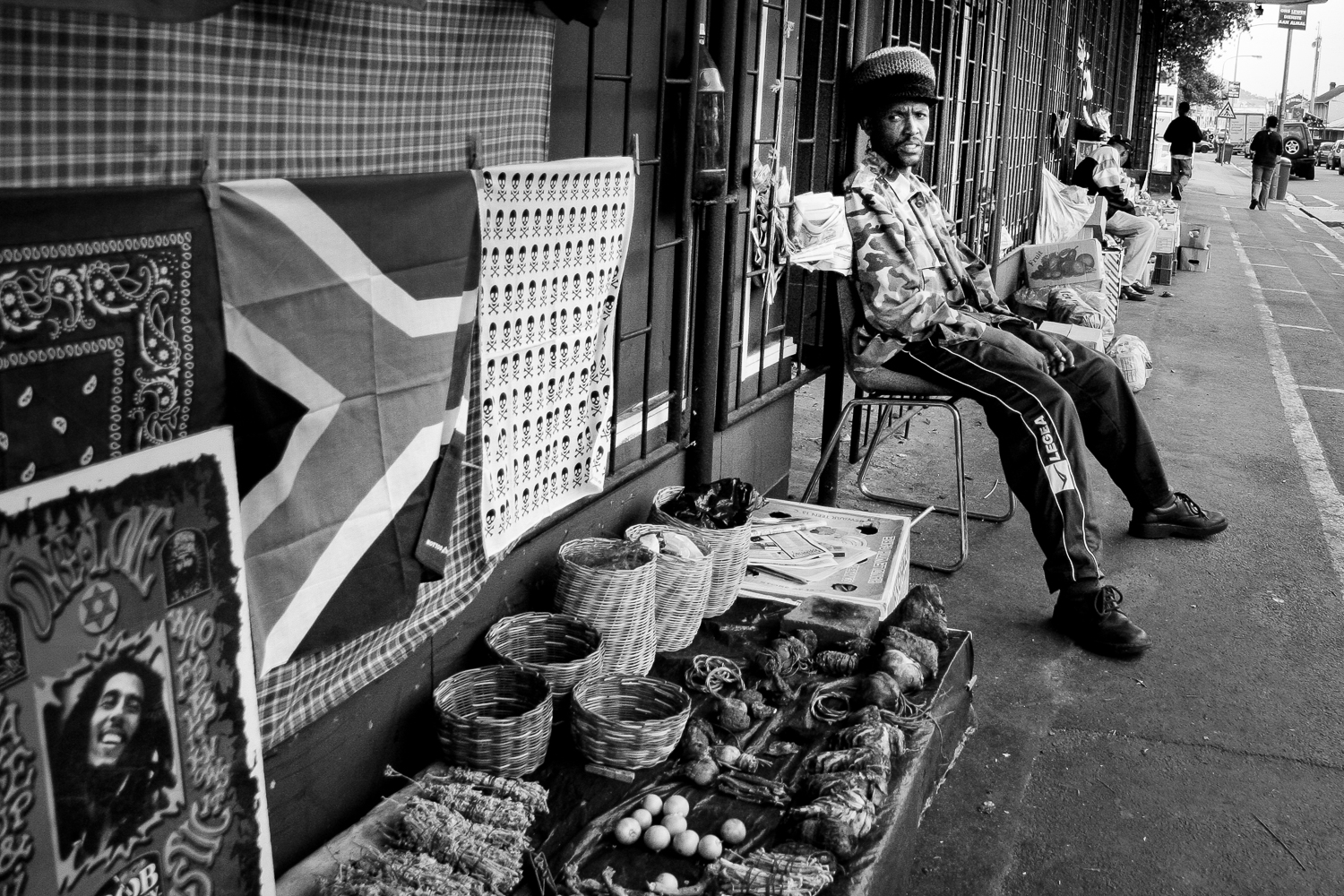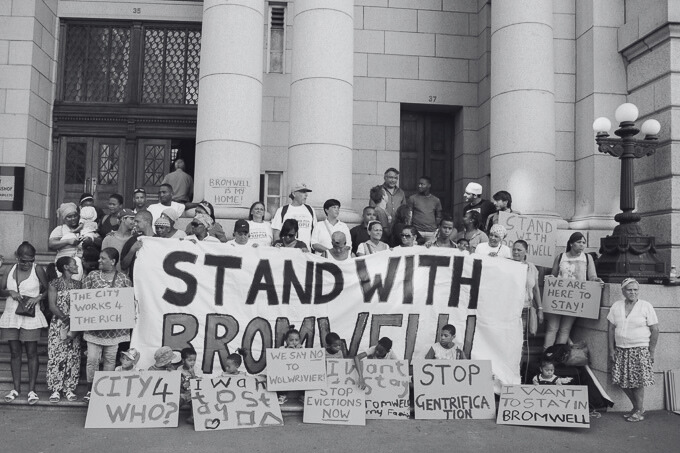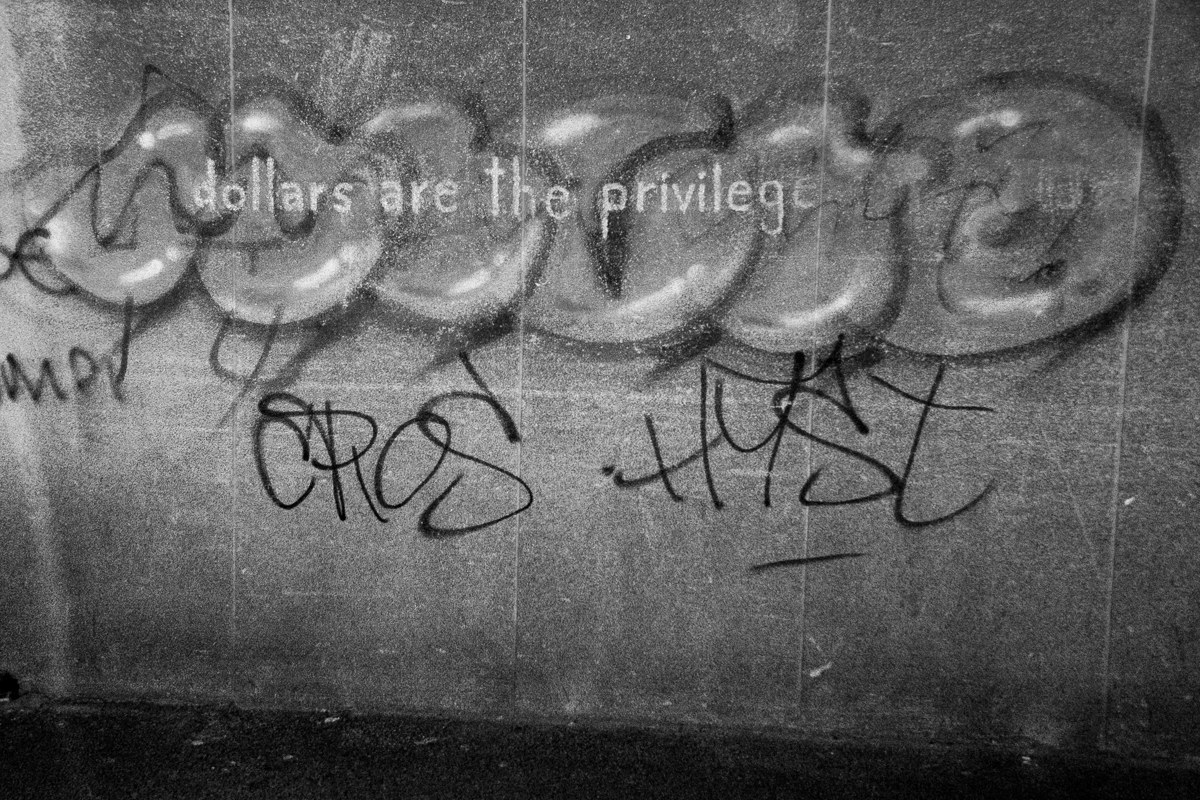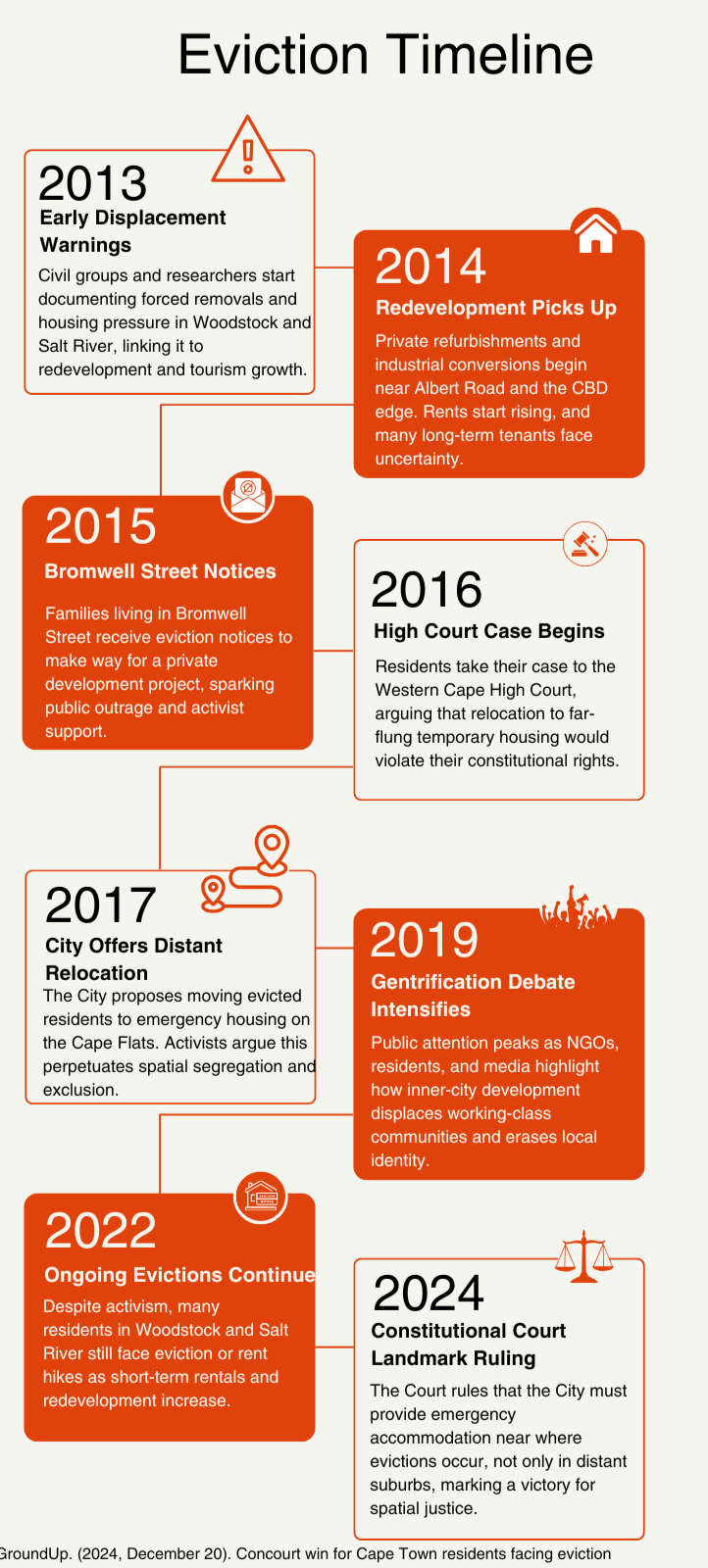Who Gets To Stay?
Gentrification in Woodstock & Salt River from 2001 → 2011 → 2022
Once working-class and diverse, now contested ground. Property investment, short-term rentals and legal battles show how fast the inner city is changing.
Click to Interact with SliderPopulation & Housing are Growing but Not Equally.
Population and household growth in these inner-city wards met rising interest from the city and investors. The average household shrank from 3.5 to 3.3 persons however by 2022 Cape Town's population had grown by 27.6% and households by 36% from its last census signaling that even more households were competing for central housing.

Photo: Mads Norgaard
Who Lives Here is Changing
2011 still shows majority Coloured, with Black African and White minorities — but priced growth + creative-sector arrivals likely shifted the mix upwards.

Photo: Mads Norgaard
Homes Appreciate Faster Than Local Incomes
Property value bands move into higher brackets faster than local household incomes. That’s the core displacement pressure.

Photo: Mads Norgaard
Short-Term Rental Footprint
In Ward 57, which includes Woodstock and Salt River, the surge of short-term rentals has added new pressure to an already limited housing market. More than 18 000 Airbnb listings citywide earn about R 433 000 per year at 71 percent occupancy, with many concentrated around Albert Road and the Old Biscuit Mill. By turning long-term homes into tourist accommodation, these listings accelerate property value increases and make it harder for local residents to remain in the inner city.

Photo: Mads Norgaard
Displacement and The Courts
Cases like Bromwell Street expose the human cost of gentrification, where low-income tenants face removal to make way for redevelopment. After years of legal battles, the 2024 Constitutional Court ruling finally required the City to provide inner-city emergency housing rather than relocating families to distant settlements

Photo: Ashraf Hendricks
Click to View Timeline
So, Who Gets To Stay?
Today, those who remain in Woodstock and Salt River are largely people whose incomes kept pace with property inflation, investors leveraging short-term rentals, or residents protected through legal and social housing interventions. The struggle over these wards reveals a broader question about Cape Town’s future: whether central spaces will serve communities or capital.

Photo Credits: Mads Norgaard

